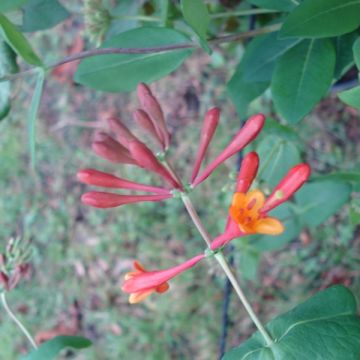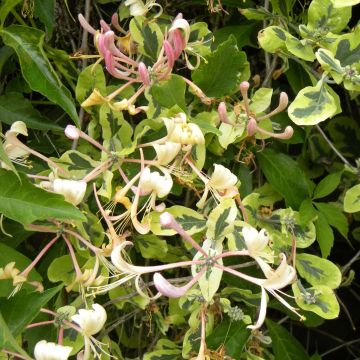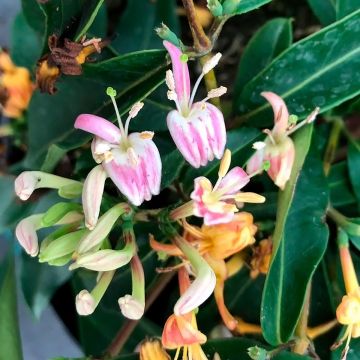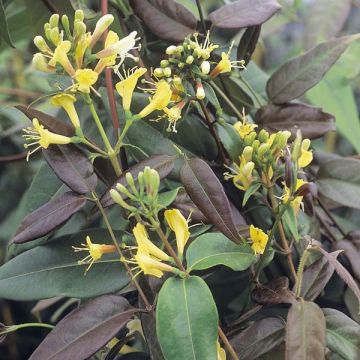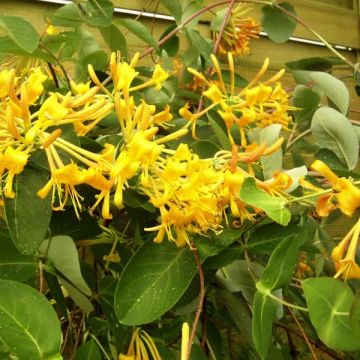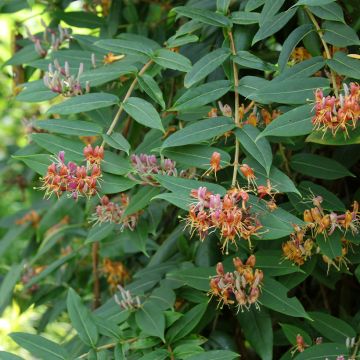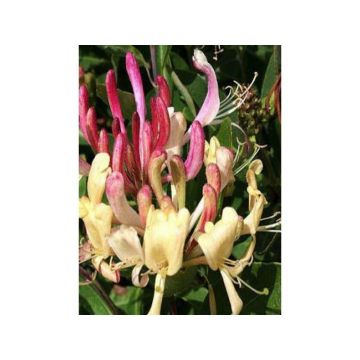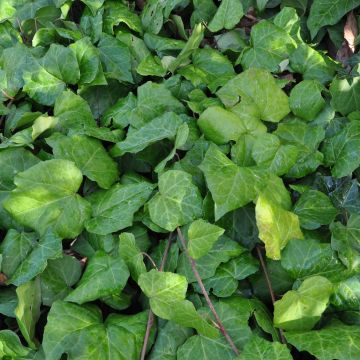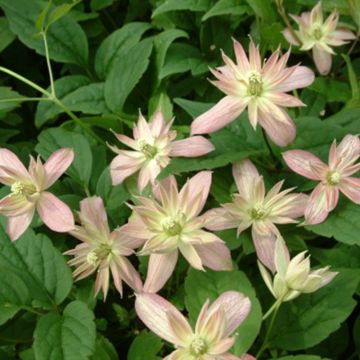

Lonicera periclymenum Belgica Select
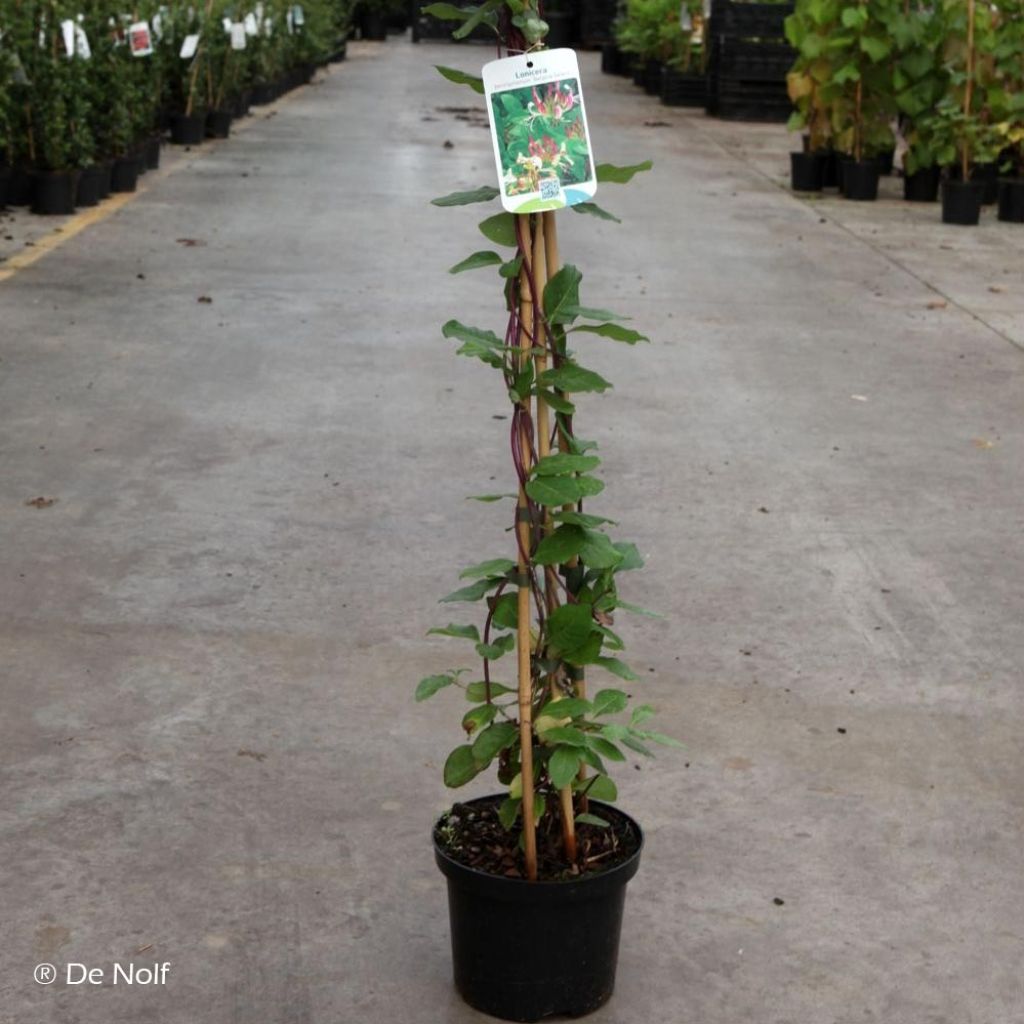

Lonicera periclymenum Belgica Select


Lonicera periclymenum Belgica Select


Lonicera periclymenum Belgica Select
Lonicera periclymenum Belgica Select
Lonicera periclymenum Belgica Select
European honeysuckle, woodbine
This item cannot be shipped to the selected country
Delivery charge from €5.90
Delivery to Corse prohibited
More information
Schedule delivery date,
and select date in basket
This plant carries a 6 months recovery warranty
More information
We guarantee the quality of our plants for a full growing cycle, and will replace at our expense any plant that fails to recover under normal climatic and planting conditions.
From €5.90 for pickup delivery and €6.90 for home delivery
Express home delivery from €8.90.
Delivery to Corse prohibited: UE law prohibits the import of this plant from mainland France to Corse as part of the fight against Xylella fastidiosa. Please accept our sincere apologies.
More information

Does this plant fit my garden?
Set up your Plantfit profile →
Description
The Lonicera periclymenum 'Belgica Select' is an improvement of the woodbine 'Belgica'. It is a climbing plant with large growth and rapid growth that produces a profusion of tricoloured flowers, pleasantly fragrant. From July to September, this large climber is adorned with heads of fine, tubular flowers, first cream white then ochre yellow, striped with pink-red on the back of the petals that contrast with its charming glaucous foliage. The clusters of bright red berries appear quickly, accompanying its spectacular flowering. Hardy and resistant, it should be planted in sun or partial shade, in ordinary soil that is not too heavy, preferably moist.
The Lonicera periclymenum belongs to the family of caprifoliaceae. It is the woodbine widely found in Europe, especially central Europe and up to Sweden. It is also found in North Africa. In France, it grows spontaneously in hedges and woods, preferably on siliceous soils, rich in sand and humus. Present in almost all our regions, it is rare in the southeast of our country. In nature, it develops strong voluble stems of 3m (10ft) or more that spontaneously wrap around neighboring shrubs and trees. This woodbine has given rise to many cultivars with flowers of different colours.
The Lonicera 'Belgica Select' does not exceed 5m (16ft) in height and 3m (10ft) in width. Its robust stems bear shiny, wide, elliptical foliage, with a medium glaucous green, which persists more or less in winter. Its tubular flowers form at the end of the shoots of the year, gathered in generous, powerfully fragrant bouquets. Highly visited by pollinating insects, they are followed by the formation of very decorative bright red berries, highlighted by cream-coloured floral buds and yellow and white flowers that continue to bloom until September, in successive waves. The fruits are highly appreciated by birds. The leaves are arranged in pairs on vigorous woody stems. This non-invasive variety will adapt to a wide range of soils as long as they are properly drained. It tolerates sea spray and pollution well.
'Belgica Select' will be superb trained against a wall, on a trellis or fence, on an arch or pergola, preferably near the terrace, the entrance of the house or a patio door to make the most of its fragrance, particularly heady in the evening. It can also make a good ground cover in a wild corner of the garden or be grown in a container on a terrace or balcony. It pairs well with small, undemanding viticella group clematis that flower at the same time. Also let it climb on shrubs with simultaneous flowering (Buddleia, climbing or shrub roses, deciduous ceanothus) or staggered flowering (Japanese quince, Abeliophyllum, white spring spireas).
Report an error about the product description
Lonicera periclymenum Belgica Select in pictures
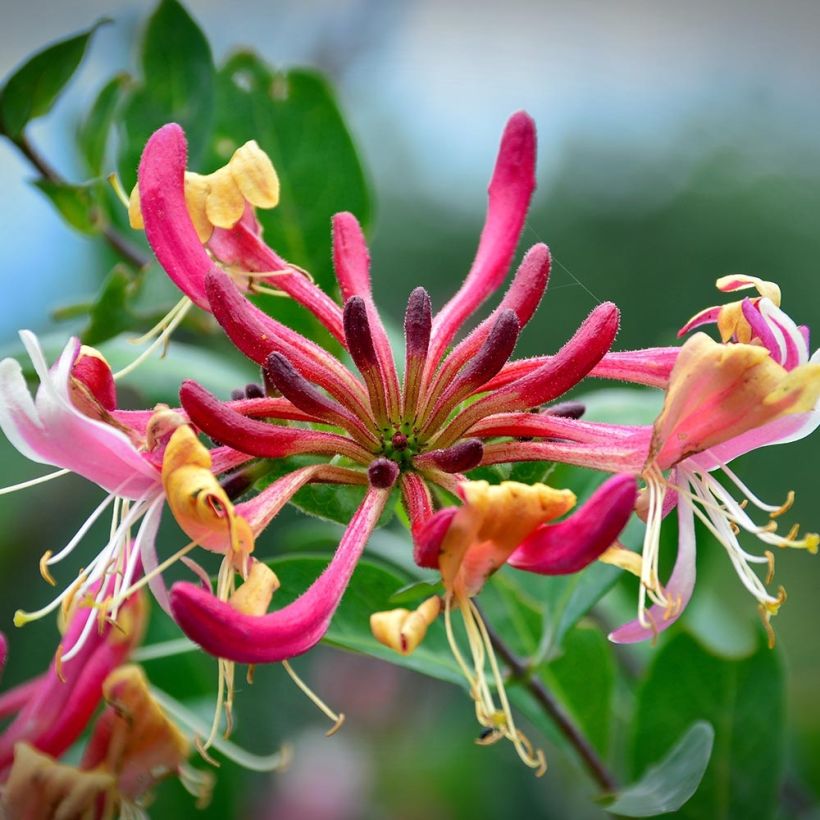

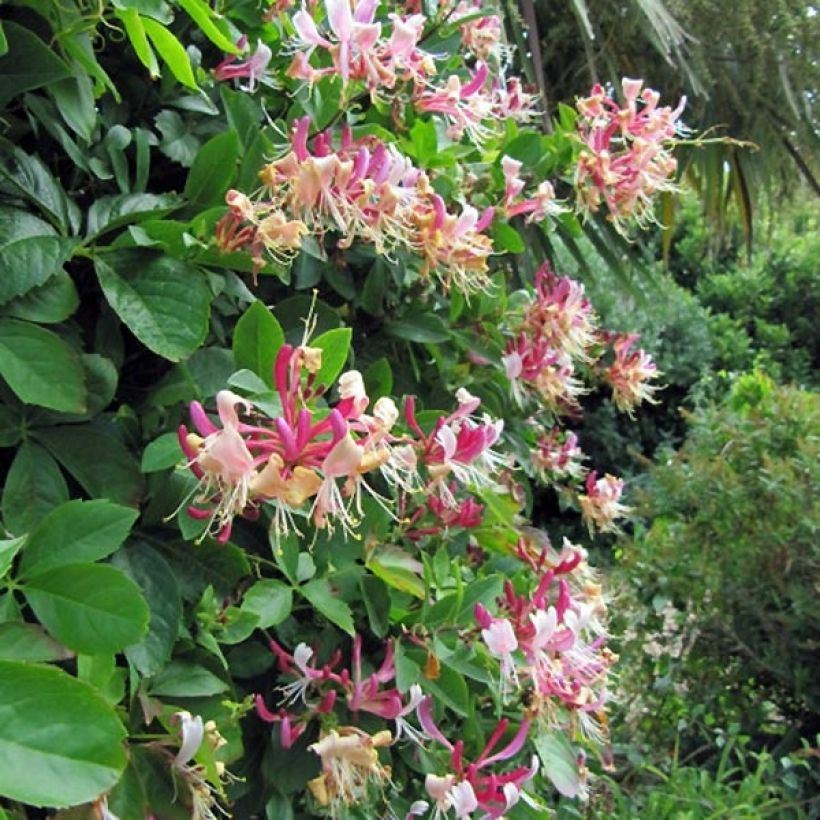



Plant habit
Flowering
Foliage
Botanical data
Lonicera
periclymenum
Belgica Select
Caprifoliaceae
European honeysuckle, woodbine
Cultivar or hybrid
Other Honeysuckle
Planting and care
Like all honeysuckles, 'Belgica Select' thrives in soil that is slightly or not at all chalky, preferably deep and moist, fairly fertile, but loose and well-draining. For container cultivation, plant in a pot that is at least 40 x cm, using a rich compost, preferably with garden soil, and make sure to water regularly during dry periods. Guide the young shoots onto a support, they will then attach themselves. Trim back excessively long shoots after flowering by cutting just above a vigorous shoot. Like all honeysuckles, it is susceptible to powdery mildew in summer, when conditions are hot and dry. To prevent powdery mildew, plant in moist, not too dry soil, avoid exposure to the scorching midday sun, and ensure air circulation within the foliage by thinning out overcrowded shoots, not pressing the shoots against a wall, but keeping the support at least 5-10 cm (2-4in) away from the wall.
Planting period
Intended location
Care
-
, onOrder confirmed
Reply from on Promesse de fleurs
Foolproof climbers
Haven't found what you were looking for?
Hardiness is the lowest winter temperature a plant can endure without suffering serious damage or even dying. However, hardiness is affected by location (a sheltered area, such as a patio), protection (winter cover) and soil type (hardiness is improved by well-drained soil).

Photo Sharing Terms & Conditions
In order to encourage gardeners to interact and share their experiences, Promesse de fleurs offers various media enabling content to be uploaded onto its Site - in particular via the ‘Photo sharing’ module.
The User agrees to refrain from:
- Posting any content that is illegal, prejudicial, insulting, racist, inciteful to hatred, revisionist, contrary to public decency, that infringes on privacy or on the privacy rights of third parties, in particular the publicity rights of persons and goods, intellectual property rights, or the right to privacy.
- Submitting content on behalf of a third party;
- Impersonate the identity of a third party and/or publish any personal information about a third party;
In general, the User undertakes to refrain from any unethical behaviour.
All Content (in particular text, comments, files, images, photos, videos, creative works, etc.), which may be subject to property or intellectual property rights, image or other private rights, shall remain the property of the User, subject to the limited rights granted by the terms of the licence granted by Promesse de fleurs as stated below. Users are at liberty to publish or not to publish such Content on the Site, notably via the ‘Photo Sharing’ facility, and accept that this Content shall be made public and freely accessible, notably on the Internet.
Users further acknowledge, undertake to have ,and guarantee that they hold all necessary rights and permissions to publish such material on the Site, in particular with regard to the legislation in force pertaining to any privacy, property, intellectual property, image, or contractual rights, or rights of any other nature. By publishing such Content on the Site, Users acknowledge accepting full liability as publishers of the Content within the meaning of the law, and grant Promesse de fleurs, free of charge, an inclusive, worldwide licence for the said Content for the entire duration of its publication, including all reproduction, representation, up/downloading, displaying, performing, transmission, and storage rights.
Users also grant permission for their name to be linked to the Content and accept that this link may not always be made available.
By engaging in posting material, Users consent to their Content becoming automatically accessible on the Internet, in particular on other sites and/or blogs and/or web pages of the Promesse de fleurs site, including in particular social pages and the Promesse de fleurs catalogue.
Users may secure the removal of entrusted content free of charge by issuing a simple request via our contact form.
The flowering period indicated on our website applies to countries and regions located in USDA zone 8 (France, the United Kingdom, Ireland, the Netherlands, etc.)
It will vary according to where you live:
- In zones 9 to 10 (Italy, Spain, Greece, etc.), flowering will occur about 2 to 4 weeks earlier.
- In zones 6 to 7 (Germany, Poland, Slovenia, and lower mountainous regions), flowering will be delayed by 2 to 3 weeks.
- In zone 5 (Central Europe, Scandinavia), blooming will be delayed by 3 to 5 weeks.
In temperate climates, pruning of spring-flowering shrubs (forsythia, spireas, etc.) should be done just after flowering.
Pruning of summer-flowering shrubs (Indian Lilac, Perovskia, etc.) can be done in winter or spring.
In cold regions as well as with frost-sensitive plants, avoid pruning too early when severe frosts may still occur.
The planting period indicated on our website applies to countries and regions located in USDA zone 8 (France, United Kingdom, Ireland, Netherlands).
It will vary according to where you live:
- In Mediterranean zones (Marseille, Madrid, Milan, etc.), autumn and winter are the best planting periods.
- In continental zones (Strasbourg, Munich, Vienna, etc.), delay planting by 2 to 3 weeks in spring and bring it forward by 2 to 4 weeks in autumn.
- In mountainous regions (the Alps, Pyrenees, Carpathians, etc.), it is best to plant in late spring (May-June) or late summer (August-September).
The harvesting period indicated on our website applies to countries and regions in USDA zone 8 (France, England, Ireland, the Netherlands).
In colder areas (Scandinavia, Poland, Austria...) fruit and vegetable harvests are likely to be delayed by 3-4 weeks.
In warmer areas (Italy, Spain, Greece, etc.), harvesting will probably take place earlier, depending on weather conditions.
The sowing periods indicated on our website apply to countries and regions within USDA Zone 8 (France, UK, Ireland, Netherlands).
In colder areas (Scandinavia, Poland, Austria...), delay any outdoor sowing by 3-4 weeks, or sow under glass.
In warmer climes (Italy, Spain, Greece, etc.), bring outdoor sowing forward by a few weeks.

































